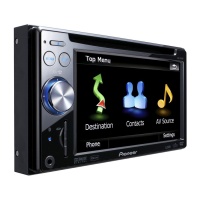
Do you have a question about the Pioneer F900BT - AVIC - Navigation System and is the answer not in the manual?
| Built-in Bluetooth | Yes |
|---|---|
| Navigation | Yes |
| Preloaded Maps | Yes |
| Touchscreen | Yes |
| USB Input | Yes |
| SD Card Slot | Yes |
| RDS Tuner | Yes |
| Audio Formats | MP3, WMA, AAC |
| iPod Compatibility | Yes |
| Steering Wheel Control | Yes |
| Weight | 2.4 kg |
| Resolution | 480 x 272 pixels |
| Video Formats | DivX |
| Dimensions | 178 x 100 mm |
| Screen Size | 5.8 inches |
Provides an overview of the manual and explains how to read it, including terminology and definitions.
Explains how to find operation procedures from contents or menu names, and how to use the glossary.
Defines conventions used in the manual for buttons, menu items, and screen titles.
Explains the terms 'Front Display' and 'Rear Display' as used in the manual.
Identifies the names of parts and main features of the navigation system using buttons.
Details on how to insert and eject discs, including precautions for the drive.
Instructions for inserting and ejecting SD memory cards, with important cautions.
Step-by-step guide for inserting an SD memory card into the slot.
Steps to eject an SD memory card from the slot.
Instructions for connecting and disconnecting USB storage devices, with safety cautions.
Guidance on connecting and disconnecting an iPod using a USB interface cable.
Describes the basic process of starting and turning off the navigation system.
Instructions for initial setup, including language selection and disclaimer.
Details on how to start the navigation system after initial setup.
Explains how to navigate through the system's menu screens.
Provides a visual overview of how to switch between different screens and menus.
Details the functions accessible from each main menu screen.
Instructions on how to display the rear camera image on the navigation screen.
Introduces how to view and use the map screen for navigation.
Explains the different elements and information displayed on the 2D map screen.
Explains the meaning of different colored flags used on the map for guidance.
Describes how the system indicates the recommended lane on multi-lane roads.
Details how to switch between 2D and 3D map view modes.
Instructions on how to zoom in and out of the map using the MULTI-CONTROL.
Explains how to pan or scroll the map to view different areas.
How to adjust the tilt and rotation of the 3D map view.
Outlines the fundamental steps involved in setting up a route to a destination.
Explains how to interact with list screens, including navigation and selection.
Details the functionality and usage of the on-screen keyboard for input.
Guides users on how to search for destinations using a street address.
Explains how to search for points of interest near the current location or cursor.
Detailed steps for finding POIs by moving the cursor on the map.
How to search for points of interest near the current GPS location.
Method to find POIs located along an active route.
Procedure to find POIs situated near the set destination.
How to memorize and recall search criteria for POI searches.
Steps to perform a POI search using previously saved criteria.
Guide to removing saved search criteria or shortcuts.
How to search for POIs using data stored on USB or SD devices.
Instructions on how to find a location by entering latitude and longitude coordinates.
How to select a previously searched location from the History list.
Steps to delete individual or all entries from the History list.
How to select a saved favorite location for quick routing.
Instructions for deleting entries from the Favorites list.
How to specify a location by manually scrolling and navigating the map.
Explains the various options available on the Map Confirmation Screen after selecting a location.
Details on how to place a map pin or save a location for future reference.
How to set the selected location as the new destination and calculate a route.
How to add the selected location as an intermediate stop on a route.
How to change the final destination of a route to the selected location.
How to set the selected location as the starting point of a new route.
How to view detailed information about a selected location on the map.
Instructions on how to place map pins as markers for easy identification.
Steps to remove previously placed map pins from the map.
How to add new points of interest (POIs) not found in the database.
How to save frequently visited locations into the Favorites list for quick access.
Instructions for deleting entries from the Favorites list.
How to view detailed information about the currently set route, including distance and time.
How to simulate route navigation at high speed without voice guidance.
How to display a full overview of the current route on the map screen.
How to check the detailed route information, including turning directions and street names.
How to edit waypoints to recalculate the route through specific locations.
How to sort waypoints to optimize the route and recalculate it.
How to remove waypoints from a route and recalculate.
How to save the current route for later recall and use.
Instructions for deleting saved routes from the system.
How to cancel the current route guidance and delete the active route.
Disclaimers and important information regarding the MSN Direct service.
Steps required to activate the MSN Direct service, including checking the product key.
Instructions on how to subscribe to the MSN Direct service online.
Steps to activate the MSN Direct service on the navigation system.
How to view a list of gas prices for nearby gas stations.
How to find nearby theaters and see movie showtimes.
Method to find theaters showing a specific movie title.
How to find movie titles showing at a selected theater.
How to view local and worldwide weather information.
Steps to check detailed local weather information.
How to view weather conditions for various locations globally.
Overview of how traffic information is displayed and used for route calculation.
Explains the meaning of traffic event icons and lines displayed on the map.
How to configure traffic information settings, including route recalculation and sorting.
Introduction to using the hands-free phone function via Bluetooth.
Notes on using cellular phones with Bluetooth wireless technology.
How to access and navigate the Phone Menu screen.
Methods for registering a cellular phone with the navigation system.
Steps to search for and register nearby cellular phones via Bluetooth.
Method to connect to a specific phone if it is not found in the nearby search.
Instructions on how to initiate pairing from the mobile phone itself.
How to manually connect a previously registered cellular phone.
Steps to disconnect a currently connected cellular phone.
How to remove a registered phone from the system.
How to answer or reject incoming calls using the hands-free system.
Detailed steps for manually answering an incoming call.
How to reject an incoming call.
Overview of different methods to make phone calls.
How to make a phone call by directly entering a number using the dial pad.
How to make calls using the history of dialed, received, or missed calls.
How to redial numbers from the history of outgoing calls.
How to call back numbers from the history of incoming calls.
How to call back numbers from the list of missed calls.
How to make calls by selecting entries from the phone's contact list.
How to make a call to a location directly from the map screen if a phone number is available.
Quickly calling home by using a pre-registered home number.
How to use the GOOG-411 free phone service with a one-touch dial.
How the system notifies of incoming SMS messages, including audible alerts.
How to transfer phone book entries from a cellular phone to the navigation system.
How to clear phone book, call history, and preset dial data.
How to adjust the ringtone and voice volume for hands-free calls.
How to turn off the Bluetooth function to stop wireless transmission.
How to set the system to automatically answer incoming calls.
How to configure the system to automatically reject all incoming calls.
How to reduce echo and improve sound quality during hands-free calls.
How to enable automatic connection to a registered phone when it comes into range.
How to change the Bluetooth device name displayed on the cellular phone.
General notes and precautions for using the hands-free phoning feature.
Details on how to control CD playback using the on-screen touch panel keys.
Explains the elements displayed on the screen during audio CD playback.
How to view and select tracks from a list on the disc.
How to access and use the Function menu for CD playback options.
Explains the display elements for playing music files from ROM.
Details on controlling music file playback using on-screen touch panel keys.
How to view and select tracks or folders from a list on the disc.
How to display and view text information embedded in audio files.
How to access and use the Function menu for music file playback options.
Explains the display elements shown during DVD-Video playback.
Details on controlling DVD-Video playback using on-screen touch panel keys.
How to display and navigate the DVD menu.
How to skip between chapters or titles during playback.
How to perform frame-by-frame or slow-motion playback.
How to bookmark a scene to resume playback later.
How to search for a specific scene by title, chapter, or time.
How to operate the DVD menu using the on-screen touch panel keys.
How to move playback forward one frame at a time.
How to slow down the playback speed.
How to switch the audio output for DVDs with LPCM audio.
Explains the display elements shown during DVD-VR playback.
Details on controlling DVD-VR playback using on-screen touch panel keys.
How to search for a specific scene by title, chapter, or time.
How to switch between Original and Playlist playback modes for DVD-VR discs.
How to skip specified intervals during video playback, useful for commercials.
How to select and play a desired title directly from the list.
How to move playback forward one frame at a time.
How to slow down the playback speed.
How to access and use the Function menu for DVD-VR playback options.
Explains the display elements shown during DivX file playback.
Details on controlling DivX playback using on-screen touch panel keys.
How to move playback forward one frame at a time.
How to slow down the playback speed.
How to search for a specific scene by folder, file, or time.
How to access and use the Function menu for DivX playback options.
How to access and navigate the DVD setup menu for various playback configurations.
How to set preferred languages for subtitles, audio, and menus.
How to enable or disable assist subtitles for the hearing impaired.
How to enable the display of angle icons for scenes with multiple camera angles.
How to adjust the display aspect ratio for different screen types.
How to set parental lock levels and code numbers to restrict content.
Steps to register a code number and set the parental lock level.
How to generate a DivX VOD registration code for content providers.
How to set the unit to automatically start playback from the first chapter of a DVD menu.
How to select whether to display external DivX subtitle files.
Instructions for inserting storage devices and starting music file playback.
Explains the display elements for playing music files from USB/SD.
How to control music file playback using on-screen touch panel keys.
How to view and select tracks or folders from a list on a storage device.
How to display and view text information embedded in audio files.
How to access and use the Function menu for music file playback options.
Instructions for inserting storage devices and starting movie file playback.
Explains the display elements shown during movie file playback.
How to control movie file playback using on-screen touch panel keys.
How to search for a specific scene by folder, file, or time.
How to access and use the Function menu for movie file playback options.
Instructions for connecting an iPod and starting playback.
Explains the display elements shown when using an iPod.
How to control music playback from an iPod using touch panel keys.
How to search for and play songs from an iPod using category lists.
How to search for items on an iPod using alphabetical filtering.
How to play video files from an iPod if video capabilities are connected.
How to control video playback from an iPod using touch panel keys.
How to search for and play video files from an iPod.
How to refine video search results using category lists.
How to search for items on an iPod using alphabetical filtering.
How to access and use the Function menu for iPod playback options.
How to shuffle music playback by songs or albums.
How to adjust the playback speed for audiobooks listened to on an iPod.
How to set video playback to wide screen mode if the format is compatible.
Explains the display elements shown during FM radio reception.
How to control FM radio tuning and settings using touch panel keys.
How to switch between detailed radio information and the preset channel list.
How to store and recall favorite FM radio frequencies using preset tuning keys.
How to use local seek tuning to find radio stations with strong signals.
Explains the display elements shown during HD Radio reception.
How to control HD Radio tuning and settings using touch panel keys.
How to switch between detailed HD Radio information and preset channel lists.
How to store and recall favorite HD Radio frequencies using preset tuning keys.
How to change the information displayed for HD Radio channels.
How to access and use the Function menu for HD Radio operations.
How to select the method for seeking radio stations (All, HD).
How to set sensitivity for local seek tuning to find strong signals.
How to switch between Analog and Digital-Analog auto reception modes.
Explains the display elements shown during AM radio reception.
How to control AM radio tuning and settings using touch panel keys.
How to switch between detailed radio information and the preset channel list.
How to store and recall favorite AM radio frequencies using preset tuning keys.
How to automatically store the strongest broadcast frequencies using BSM.
How to set sensitivity for tuning in AM radio stations with strong signals.
Explains the display elements shown during XM tuner operation.
How to control XM tuner functions using on-screen touch panel keys.
How to memorize the current song's title and artist name for 'My Mix'.
How to recall stored equalizer curve settings.
How to access and use the Function menu for XM tuner operations.
How to recall stored XM channels using preset keys.
How to manually tune XM channels up or down one step at a time.
How to switch between XM bands (XM 1, XM 2, XM 3) for preset selection.
How to select an XM channel by directly entering its number.
How to switch the display information for XM channels.
How to store and recall favorite XM broadcast stations using preset tuning keys.
How to search for and select XM channels from a list display.
How the My Mix function memorizes song titles and alerts when broadcast.
How to memorize song titles and artist names for alerts.
How to listen to memorized traffic channels using the TRAFFIC function.
How to manage memorized songs, including selecting songs for alerts.
How to delete memorized songs from the list.
How to set alerts for favorite sports teams' games.
Explains the display elements shown during SIRIUS tuner operation.
How to control SIRIUS tuner functions using on-screen touch panel keys.
How to memorize the current song's title and artist name for My Mix.
How to activate the Instant Replay function for SIRIUS broadcasts.
How to recall stored equalizer curve settings.
How to access and use the Function menu for SIRIUS tuner operations.
How to recall stored SIRIUS channels using preset keys.
How to manually tune SIRIUS channels up or down one step at a time.
How to switch between SIRIUS bands (SIRIUS 1, 2, 3) for preset selection.
How to switch between All Ch Mode and Category Mode for channel selection.
How to select a SIRIUS channel by directly entering its number.
How to store and recall favorite SIRIUS broadcast stations using preset tuning keys.
How the My Mix function memorizes song titles and alerts when broadcast.
How to memorize a traffic channel for quick access.
How to access a memorized traffic channel.
How to replay stored SIRIUS broadcasts using the Instant Replay function.
How to manage memorized songs, including selecting songs for alerts.
How to delete memorized songs from the list.
How to set alerts for favorite sports teams' games.
How to enable or disable alerts for selected items or teams.
What happens when a game involving a favorite team is broadcast.
How to view game information and broadcast channel details.
How to display video image output from AV1 input.
How to display video image output from AV2 input.
How to display the touch panel keys for AV input operation.
Explains the display elements for external unit operation.
How to control external units using on-screen touch panel keys.
How to operate external units using function keys F1 through F4.
Overview of the customizable settings within the Navi Settings menu.
Explains how to change settings like volume and beep tone within Navi Settings.
How to check GPS status and manually set time and time zone.
How to customize 3D map display settings like landmarks and terrain detail.
How to customize general map display settings like color and night mode.
How to select which options are displayed in the Multi-Info window.
How to enable and configure automatic map zooming behavior.
How to enable automatic map zooming out when guidance points are distant.
How to manage points of interest, including setting visibility and creating categories.
How to manage recorded driving history logs.
How to customize route calculation settings like method, highways, and toll roads.
How to customize warning settings, such as speeding alerts and tolerance.
How to set display formats for distance, coordinates, date, and time.
How to reset system settings to their default or factory configuration.
How to register or modify the home location for easy routing.
How to start a demonstration of route guidance simulation.
How to adjust navigation guidance and beep volumes, including master, voice, keys, and dynamic volume.
How to check copyright and map database information.
How to customize the display and visibility of POI icons on the map.
How to create custom categories for organizing points of interest.
How to edit properties of custom points of interest, such as name and icon.
How to activate the track logger to record driving history and review it later.
How to activate the track logger for a single trip only.
How to view and replay recorded track logs, including using the 'Fly over' feature.
How to configure track logger settings like update interval and auto-saving.
How to register or modify the home location for easy routing.
Overview of the customizable settings within the System Settings menu.
How to access the System Settings menu.
How to set the display and voice guidance languages.
How to customize the startup image by importing a picture file.
How to set up and activate the rear view camera function.
How to calibrate the touch screen for accurate response to touch inputs.
How to adjust the brightness level of the LCD screen.
How to select and customize the illumination color for the unit's keys.
Overview of the audio settings available in the AV Sound menu.
How to access the AV Sound menu.
How to adjust the fader and balance for ideal sound distribution across seats.
How to adjust equalization settings to match vehicle acoustics using a 3-band equalizer.
How to compensate for low-frequency deficiencies at low volumes.
How to turn on/off subwoofer output and adjust its phase, level, and frequency.
How to activate the high pass filter to prevent low sounds from front/rear speakers.
How to adjust volume levels for different AV sources to prevent drastic changes.
How to enhance bass sounds using the Bass Booster feature.
Overview of the settings available in the AV Settings menu.
How to access the AV Settings menu.
How to configure the AV1 input setting for connected components.
How to configure the AV2 input setting for connected components.
How to set the auto antenna to extend/retract based on radio or ignition status.
How to change the screen mode for video playback to Full or Normal.
How to select muting or attenuation methods for navigation guidance.
How to configure the rear speaker output for full-range or subwoofer connection.
How the system acquires iPod information for voice commands.
How to select whether to display external DivX subtitle files.
Safety precautions related to using the voice operation feature while driving.
Introduction to the voice recognition technology and its capabilities.
Basic steps involved in using voice commands to operate the system.
How to initiate voice operation by pressing the MULTI-CONTROL.
How to get brief operating instructions by voice if lost.
Methods to cancel voice operation at any time.
How to play music from an iPod using voice commands.
How to make a phone call by voice command using contacts.
List of recognized voice commands for basic system operation.
Details on using voice commands to control iPod music playback.
How to change AV sources using voice commands.
List of voice commands for making phone calls and managing contacts.
Advice for ensuring voice commands are recognized correctly.
How to set a password to protect the navigation system from unauthorized use.
How to enter the password to unlock the navigation system.
How to remove the anti-theft password.
Information on what to do if the password is forgotten.
Methods to reset the system to default settings, including RESET button, restore, and reboot.
Table detailing which settings are deleted by each reset method.
List of common problems with the navigation screen and AV screen, with causes and solutions.
Troubleshooting common issues related to the navigation screen.
Troubleshooting common issues related to the phone screen and Bluetooth connection.
Explanation of navigation function error messages and recommended actions.
List of error messages related to AV source playback and their solutions.
Troubleshooting common issues related to SD, USB, and iPod connectivity and playback.
Troubleshooting for issues related to parking brake connection and system updates.
Explanation of how the system measures location using GPS and Dead Reckoning.
Details on how the Global Positioning System is used for location accuracy.
Explanation of the built-in sensor system for calculating vehicle position.
How GPS and Dead Reckoning data are combined for maximum positioning accuracy.
Explanation of how map matching corrects vehicle position to the nearest road.
Factors that can cause positioning errors and how to minimize them.
Factors like road conditions and GPS signal quality that can affect positioning accuracy.
Information about how the navigation system sets routes based on map data rules.
Explanation of symbols used for highway, ferry, and other directional information.
Explanation of icons used to represent traffic conditions like stop-and-go and road closures.
Basic precautions for handling discs to ensure optimal performance and longevity.
Information on suitable ambient conditions for disc playback and potential issues.
Information on compatible disc types (DVD-Video, CD) and limitations.
Notes on compatibility with AVCHD format discs.
Information on playing DualDisc media, including potential compatibility issues.
Information about Dolby Digital audio support.
Information about DTS digital audio output capabilities.
Comprehensive compatibility notes for playable media.
General notes about disc compatibility and limitations.
General notes about compatibility and usage of external storage devices.
Specific compatibility information for USB storage devices.
Details on compatibility with AVI video file formats.
Details on compatibility with MPEG-4 video file formats.
General notes regarding WMA file playback and text information display.
Specific compatibility details for AAC audio files.
Specific compatibility details for DivX video files.
A comprehensive chart detailing compatibility for various media types across different models.
Specific compatibility details for MP3 files, including bit rate and ID3 tag versions.
Specific compatibility details for WMA files, including bit rate and sampling frequency.
Specific compatibility details for WAV files, including format and quantization bits.
Definitions of technical terms and acronyms used in the manual.
Explanation of ID3 tags for embedding track information in MP3 files.
Explanation of the international standard for DVD/CD-ROM folder and file logic.
Definition of Joint Photographic Experts Group.
Definition of MPEG Audio Layer 3.
Definition of Moving Pictures Experts Group.
Explanation of how multiple camera angles are used in DVDs.
Explanation of how multiple audio tracks or languages are available on DVDs.
Definition of multi-session recording method.
Explanation of how multiple subtitle languages are available on DVDs.
Method for writing files to CD-R at required times.
Explanation of parental lock feature for DVD-Video discs to restrict content.
Explanation of the term 'Phone book' as an address book on a user's phone.
Definition of Point of Interest (POI) as locations stored in map data.
Explanation of region numbers on DVD players and discs.
Process of determining the ideal route to a destination.
The route marked by the system to the destination, highlighted on the map.
Explanation of titles on DVD-Video or DVD-VR discs for searching.
Explanation of how the system logs the driving course for later review.
Definition of Variable Bit Rate.
The giving of directions by navigation voice.
Definition of a waypoint as a location visited before the destination.
Definition of Windows Media Audio.
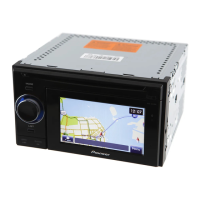

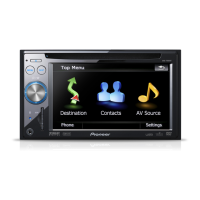

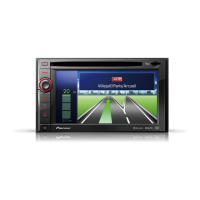




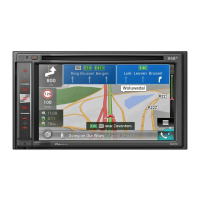


